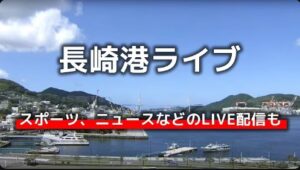Nagasaki: A City of History, Resilience, and Stunning Beauty
Nagasaki (長崎) is a vibrant port city located on the northwest coast of Kyushu, Japan. With a history shaped by international trade and the atomic bombing of World War II, Nagasaki offers a unique and moving travel experience. It’s a city of resilience, beauty, and cultural fusion.
Key Features:
- International History: Nagasaki was one of the few Japanese ports open to foreign trade during Japan’s period of isolation, resulting in a unique blend of cultures.
- Atomic Bomb History: The city is a poignant reminder of the devastation of the atomic bombing and a symbol of peace.
- Scenic Landscapes: Nagasaki is surrounded by hills and the sea, offering stunning views.
- Delicious Food: Known for its Champon noodles, Castella cake, and other unique local dishes.
- Unique Cultural Blend: Influenced by Dutch, Portuguese, and Chinese cultures, Nagasaki has a distinct atmosphere.
Top Attractions:
- Nagasaki Peace Park: A memorial park commemorating the atomic bombing, with a powerful Peace Statue.
- Nagasaki Atomic Bomb Museum: A museum documenting the history of the atomic bombing.
- Glover Garden: A collection of preserved Western-style houses from the Meiji era, offering beautiful views of the city and harbor.
- Oura Cathedral: Japan’s oldest Christian church, a beautiful example of European architecture.
- Dejima: A reconstructed Dutch trading post, offering a glimpse into Nagasaki’s international history.
- Confucian Shrine and Historical Museum: A Confucian shrine and museum showcasing Chinese culture.
- Mount Inasa: Offers spectacular panoramic views of Nagasaki, especially beautiful at night.
- Huis Ten Bosch: A Dutch-themed amusement park with canals, windmills, and European architecture (located outside of Nagasaki city, but easily accessible).
- Hashima Island (Gunkanjima): A deserted island that was once a coal mining facility (accessible by boat tour, highly recommended). Book tours in advance!
- Sofukuji Temple: A Chinese-style temple.
Food and Drink:
- Champon: A noodle soup dish with seafood, vegetables, and pork.
- Sara Udon: Crispy fried noodles topped with a thick sauce containing seafood and vegetables.
- Castella: A sponge cake introduced by the Portuguese.
- Shippoku Cuisine: A unique style of cuisine that combines Japanese, Chinese, and Western influences.
- Toruko Rice: A pilaf-style rice dish topped with curry and tonkatsu (pork cutlet).
Getting Around:
- Streetcar (Tram): A convenient and charming way to get around Nagasaki.
- Buses: Local buses cover a wide area.
- Walking: Many attractions are within walking distance of each other.
- Taxis: Readily available.
Tips for Visiting:
- Learn About the History: Take the time to learn about Nagasaki’s history, including its international trade and the atomic bombing.
- Visit the Peace Park and Museum: Pay your respects at the Nagasaki Peace Park and learn about the devastating effects of the atomic bomb at the Nagasaki Atomic Bomb Museum.
- Explore the Historic Districts: Wander through the historic districts and admire the unique blend of cultures.
- Enjoy the Views: Take in the stunning views of the city and harbor from Mount Inasa and other vantage points.
- Sample the Local Cuisine: Try Nagasaki’s famous Champon noodles, Castella cake, and other local dishes.
- Purchase a Streetcar Pass: A streetcar pass can save you money if you plan to use the streetcar frequently.
Important Considerations:
- The Atomic Bomb History: Be respectful and mindful when visiting sites related to the atomic bombing.
- Hills: Nagasaki is a hilly city, so be prepared for some walking uphill.
In Summary:
Nagasaki is a city that offers a unique and moving travel experience. With its rich history, beautiful scenery, and delicious food, Nagasaki is a destination that will stay with you long after you leave.

